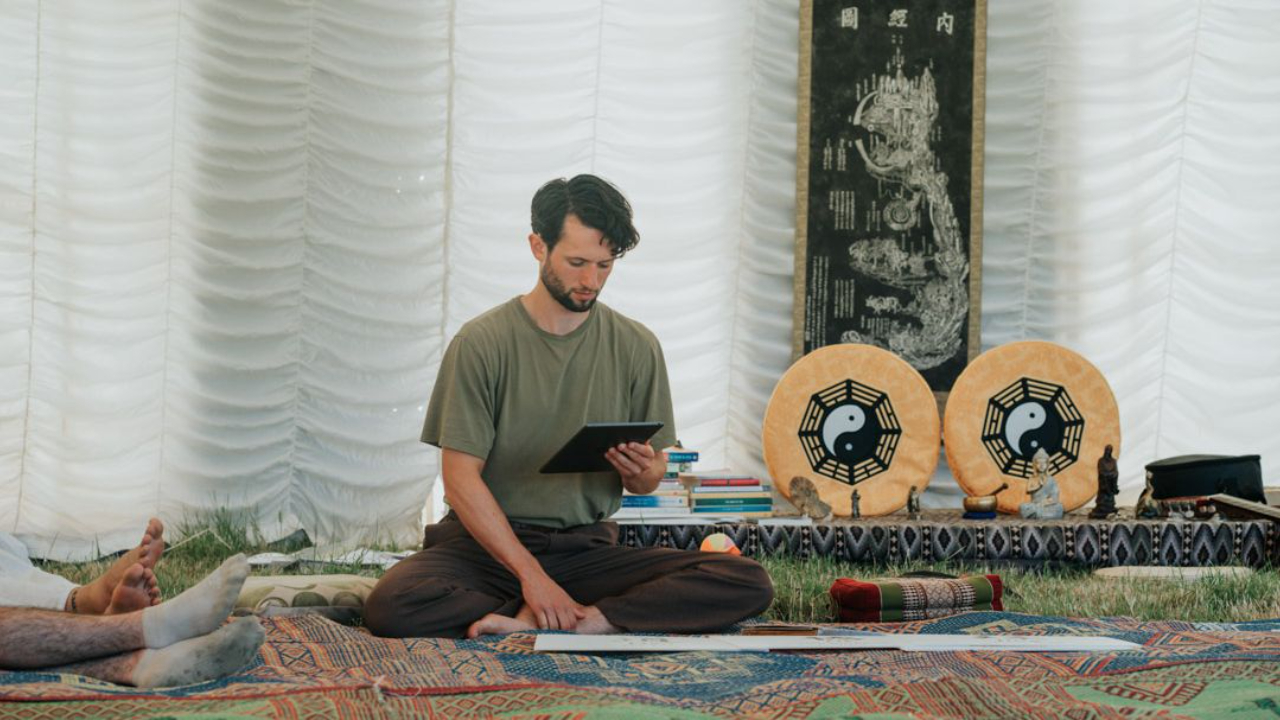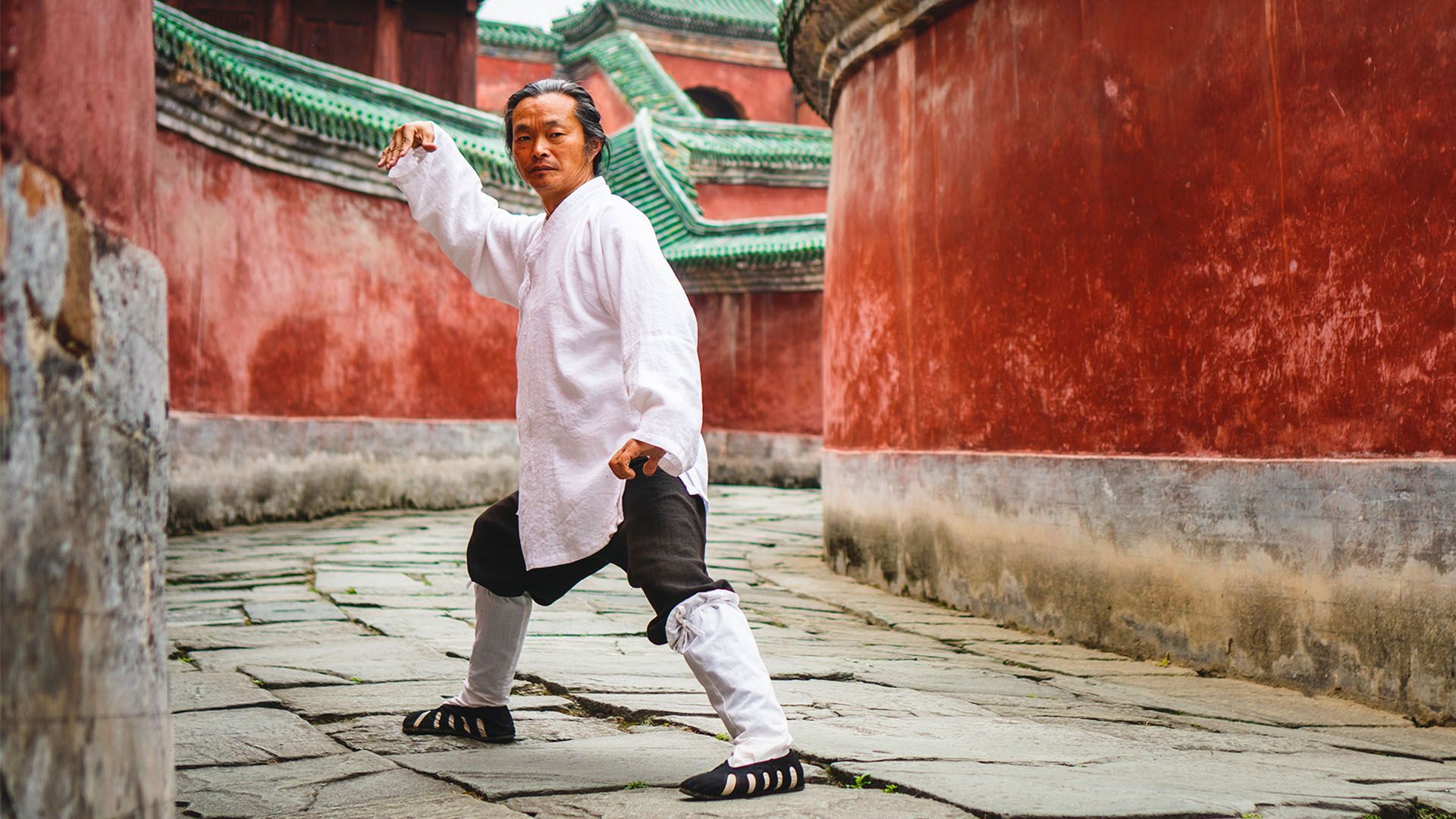Chen Style Tai Chi: Beginners Guide
Dec 07, 2023
Originating from the Chen village in China, this style of Tai Chi is renowned for its unique blend of slow, graceful movements and sudden bursts of power. Ideal for beginners, Chen Style Tai Chi not only offers a path to physical wellness but also fosters mental tranquility and spiritual growth. This guide is designed to introduce novices to the fundamental principles of this art, providing insights into its history, techniques, and the myriad benefits it offers. Embark on this transformative practice and discover the balance between yin and yang within yourself. Read More
Table of Contents
Key Characteristics of Chen Style Tai Chi
- Unique Spiraling Movements: Chen-style Tai Chi is distinctive for its silk-reeling energy, a spiraling movement that flows through the body. This technique improves flexibility and internal energy flow.
- Combination of Soft and Hard Techniques: It uniquely blends soft, flowing movements with sudden releases of power, offering a dynamic martial arts experience.
- Low Stances and Emphasis on Leg Work: Practitioners often adopt lower stances compared to other styles, which enhance leg strength and stability.
- Incorporation of Jumping and Stamping: This style includes more explosive actions like jumps and stamps, adding a vigorous element to the practice.
- Focus on Internal Energy: Chen style emphasizes cultivating 'Qi' or internal energy, which is believed to improve health and vitality.
Benefits of Practicing Chen-Style Tai Chi
Practicing Chen Style Tai Chi offers a multitude of benefits that encompass physical, mental, and emotional well-being.
- Physical Health: The unique movements of Chen Style Tai Chi, characterized by their spiraling nature and a blend of soft and hard techniques, promote physical fitness. Regular practice strengthens muscles, enhances flexibility, and improves balance. The lower stances and dynamic movements also contribute to increased leg strength and stability.
- Cardiovascular Health: Despite its seemingly gentle approach, Chen Style Tai Chi is effective in boosting cardiovascular health. The continuous movements, combined with deep breathing, enhance blood circulation and increase heart rate, contributing to a healthier heart and improved overall stamina.
- Joint Health and Mobility: The flowing motions are particularly beneficial for joint health. They encourage mobility and can help alleviate the symptoms of conditions like arthritis by reducing stiffness and pain.
- Mental and Emotional Benefits: On a mental level, Tai Chi requires concentration and mindfulness, which lead to improved mental clarity and focus. The meditative aspect of the practice aids in stress reduction and anxiety management, promoting a sense of calm and emotional balance.
- Overall Well-Being: By integrating body movements with breathing and mental focus, Chen Style Tai Chi offers a holistic approach to health. It aligns the body, mind, and spirit, leading to enhanced overall well-being.
Basic Principles of Chen Style Tai Chi
Chen Style Tai Chi is grounded in several core principles that guide its practice.
- The Concept of Yin and Yang: Central to Chen Style Tai Chi is the concept of Yin and Yang. This principle emphasizes balance and harmony, reflected in the style's blend of soft and hard movements. Yin represents calm, fluid motions, while Yang signifies explosive, dynamic energy. Practicing Chen Tai Chi teaches one to balance these opposing forces, not just in movements but in everyday life.
- Relaxation and Yielding: One of the fundamental principles is the concept of relaxation. Practitioners learn to relax their bodies, allowing energy to flow smoothly. This relaxation is not just physical but also mental, aiding in the release of tension and the cultivation of inner peace.
- Upright Posture: Maintaining an upright and aligned posture is essential. This alignment allows for the proper flow of Qi (vital energy) throughout the body, which is central to Tai Chi practice.
- Coordinated Breathing: Breath is synchronized with movement in Tai Chi. This coordination enhances the flow of Qi and supports the execution of movements with greater efficiency and power.
- Mindfulness and Intention: Every movement in Chen Style Tai Chi is performed with intention and awareness. This mindfulness ensures that the practitioner is fully present in the moment, enhancing the meditative aspect of the practice.
- Harmony of Yin and Yang: Reflecting Taoist philosophy, Tai Chi emphasizes the balance of Yin (soft, yielding) and Yang (hard, forceful) elements. This balance is crucial in executing movements that are both fluid and strong, embodying the essence of Chen Style Tai Chi.
Core Techniques and Movements
Understanding the core techniques and movements in any discipline is crucial for developing proficiency. Firstly, mastering the basics is essential. This involves understanding the fundamental principles and practices of the field. For instance, in painting, this would mean learning about different brush strokes, color mixing, and composition. In sports, it involves fundamental skills like passing, shooting, or dribbling.
Secondly, one must learn about the historical movements or trends that have shaped the discipline. This could involve studying different art movements like Impressionism or Cubism, or, in a sport, understanding various playing styles and tactics that have evolved. Knowing these movements helps develop a deeper appreciation and a more nuanced approach.
Finally, it's important to practice and experiment with these frameworks. This means not only replicating what has been done but also trying new combinations or approaches. This experimentation is what leads to personal growth and innovation. It is the bridge between learning the fundamentals and creating something uniquely your own.
Step-by-Step Guide for Beginners
- For beginners, a structured approach can be immensely helpful. The first step is to gather the right resources and tools. This means having the necessary equipment or materials and also finding reliable sources of information or instruction.
- Next, setting clear, achievable goals is important. These should be specific, measurable, and suitable for your level. Starting with overly ambitious goals can lead to frustration and burnout. Progress is more effectively made with small, consistent steps.
- The third step is to create a regular practice schedule. Consistency is key to learning any new skill. Even short, daily practice sessions are more effective than irregular, lengthy ones. This helps in building muscle memory and understanding.
- The fourth step involves seeking feedback. This can be from a teacher, mentor, or peer. Constructive criticism is essential for identifying areas for improvement and learning from mistakes.
- Finally, patience and perseverance are vital. Learning a new skill takes time and effort. There will be challenges and setbacks, but with persistence, improvement is inevitable.
Pro Tips:
- Start slowly, emphasizing the quality of each movement over speed.
- Pay attention to breathing; inhale and exhale should synchronize with movements.
- Practice regularly, even if for short durations, to build muscle memory.
Common Mistakes and How to Avoid Them
1. Overexertion:
Beginners often fall into the trap of overexertion, mistaking Tai Chi’s slow pace for ease. It’s essential to remember that Tai Chi is about balance and flowing movements, not force or speed. Avoid pushing your body beyond its comfort zone, as this can lead to muscle strain or injury. Here are some tips to prevent overexertion:
- Listen to your body and respect its limits.
- Focus on smooth, controlled movements rather than speed.
- Gradually increase the duration and intensity of your practice.
2. Incorrect Posture:
The essence of Tai Chi lies in maintaining correct posture. Incorrect posture not only diminishes the effectiveness of the practice but also increases the risk of injury. To ensure proper posture:
- Keep your spine straight and aligned.
- Relax your shoulders and let your arms flow naturally.
- Distribute your weight evenly on both feet.
3. Overlooking the Basics:
Many beginners try to jump into advanced techniques without a solid foundation. This can lead to poor habits and limited understanding. To avoid this, dedicate time to learning and practicing the basics thoroughly before moving on.
4. Lack of Consistent Practice:
Sporadic practice leads to slow progress. Establish a regular practice routine and stick to it. Consistency is more important than the length of each practice session.
5. Ignoring Feedback:
Avoiding or dismissing feedback can hinder growth. Embrace constructive criticism and use it to improve. Seek feedback from knowledgeable and trustworthy sources.
6. Setting Unrealistic Goals:
Unrealistic goals can be demotivating. Set achievable, short-term goals that lead to long-term aspirations. Celebrate small victories to maintain motivation.
7. Fear of Making Mistakes:
Many beginners are afraid to make mistakes, but mistakes are a crucial part of learning. Instead of fearing them, learn from them. Understand that making mistakes is a normal part of the learning process.
Integrating Tai Chi into Daily Life
Practice Schedule: Consistency is key to mastering Tai Chi. Integrating it into your daily routine ensures steady progress. Aim for a practice schedule that is realistic and sustainable. Early morning or evening times are often preferred for their calmness. Remember, even a short, consistent daily practice is more beneficial than sporadic, lengthy sessions.
Mindful Tai Chi: Tai Chi is not just a physical exercise; it’s a form of moving meditation. Incorporating mindfulness into your practice enhances its benefits. Be present in each movement, paying attention to your breath and the flow of energy through your body. This mindful approach helps in reducing stress and improving mental clarity, making Tai Chi a holistic exercise for both body and mind.
Conclusion
As we conclude this guide on Chen Style Tai Chi, we hope that it has illuminated the path for beginners embarking on this enriching journey. This art form is not just about physical movements; it's a gateway to understanding deeper aspects of life and oneself. Through consistent practice, one can expect improvements in balance, strength, and mental clarity. Remember, the journey in Tai Chi is continuous and ever-evolving, always offering new layers of understanding and skill. Are you ready to take the first step and experience the profound impact of Chen Style Tai Chi in your life?
FAQs
1. What makes Chen Style Tai Chi unique?
Chen Style offers a dynamic Tai Chi experience by combining slow, flowing movements with sudden bursts of power and speed.
2. Is Chen Tai Chi suitable for beginners?
It's an excellent choice for beginners due to its emphasis on foundational skills, balance, and coordination.
3. How often should I practice Chen Style Tai Chi as a beginner?
Consistency is key. Aiming for short, daily practice sessions, even if it's just for 10-15 minutes, is highly beneficial.
4. What are the health benefits of practicing Chen Style Tai Chi?
Practitioners can experience improved balance, flexibility, muscle strength, and mental relaxation. It's also known to reduce stress and improve overall well-being.
5. Do I need any special equipment to start practicing Chen Tai Chi?
No special equipment is required. Comfortable clothing and a calm, open space are all you need to begin your Tai Chi practice.







